Ornamental cabbage Plant
Ornamental Cabbage, a variety of Brassica oleracea, is an outdoor plant known for its colorful foliage. Plant in well-draining soil with full sun exposure. Water consistently, and remove any damaged or yellowing leaves. Pruning helps maintain a neat and attractive appearance.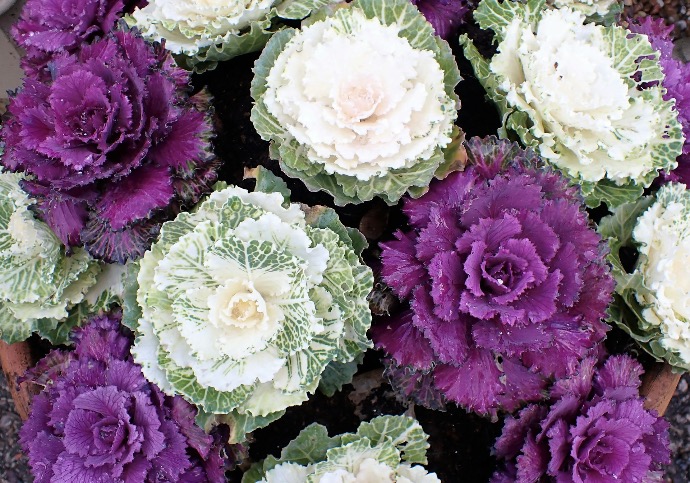
Habit
Annual
Height
0.3-0.5 m
Growth
Fast
Soil
Well-drained, fertile soil
Shade
Full Sun
Moisture
Moist
Edible
No
Medicinal
No
Origin
Europe
Climatic Condition
Temperate, Subtropical
Temperature (°)
10-20°C
Humidity (%)
50-70%
Potting media
Loamy, peat
Fertilizers
Balanced NPK (10-10-10)
Watering
Regular, moderate
Plant Weight
100-500 g
Flowering Time
Fall, Winter
Soil Ph level
6.0 - 7.5
Water Ph level
6.5 - 7.5
Soil EC
1-2 dS/m
Yield Per Plant
Ornamental (leaves)
NPK ratio
10:10:10
life Span
Annual
Health Benefits
Ornamental, edible in some varieties
Suggested Grow Media or Potting Mix ?
40% compost, 30% peat moss, 30% perlite
Suggested Fertigation/Fertilizers
Fertilize every 2 weeks with a balanced, water-soluble fertilizer.
Common Diseases and Remedies
Club root, Downy mildew.
Stunted growth , Fluffy growth.
Compost, Baking soda@1 litre.
HEALTH BENEFITS
· Mostly decorative, but edible varieties are rich in fiber and vitamins A, C, and K.
· Contains antioxidants that support heart and immune health.
· Helps detoxify the body and support digestion.
What Is An Ornamental cabbage?
Ornamental cabbage, also known as cauliflower, is a type of cabbage grown for its decorative leaves rather than for food. It is often planted in gardens or used in landscaping to add color and texture, especially in fall and winter. The leaves come in a variety of shades of green, purple, pink, and white, making them a vibrant display in the garden or in containers.
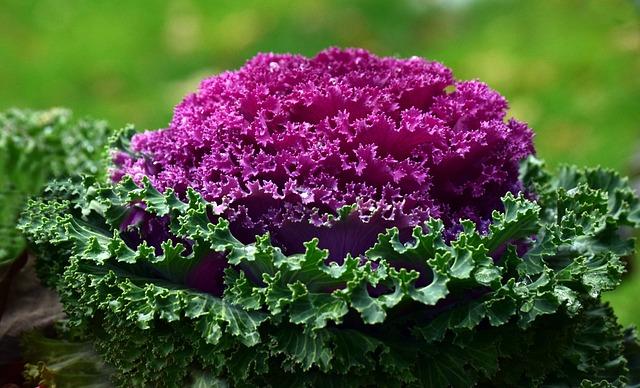
What Are The Different Types Of Ornamental cabbage?
1. Nagoya series
Has curly leaves in bright colors such as purple, pink, and white.
2. Peacock Series
Known for its deeply serrated leaves in shades of pink, purple and white, resembling peacock feathers.
3. Red Ball
Frilled deep purple leaves add a dramatic touch to garden beds and containers.
4. Osaka Series
A compact plant with rounded leaves in shades of pink, purple and white, perfect for borders and edges.
5. Pigeon series
Characterized by feathery, lacy leaves in a variety of colors, including pink, purple, and white.
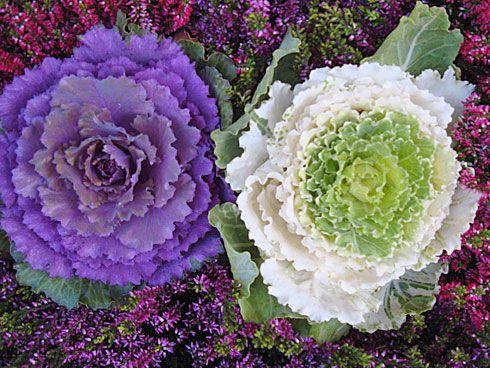
How To Care For Ornamental cabbage ?
1. Location
Ornamental cabbage grows best in cool climates and requires full sun to partial shade. It adapts to a variety of soils, but prefers well-drained, fertile soil. Plant in an area that receives about 6 hours of sunlight per day, and space the plants appropriately for good air circulation and growth.
2. Sunshine
Ornamental cabbage generally prefers full sun for optimal growth and color development. Make sure you get at least 6 to 8 hours of sunlight per day. In hot climates, afternoon shade can help prevent leaves from wilting and burning. Make sure the soil is well-drained and keep the plant moist, especially during hot, dry months.
3. Soil
Ornamental cabbage prefers soil that is rich in organic matter and has good drainage. To improve drainage, a mixture of compost, peat moss, perlite or sand is suitable. Aim for a slightly acidic to neutral pH of about 6.0 to 7.0. Check the moisture content of the soil regularly to make sure it doesn't get too dry or soggy.
4. Hydration
Hydration of ornamental cabbage is very important, especially during dry and hot seasons. Water thoroughly and evenly to keep the soil evenly moist but not soggy. Putting mulch around your plants will help retain moisture. Avoid getting the leaves wet to prevent fungal diseases.
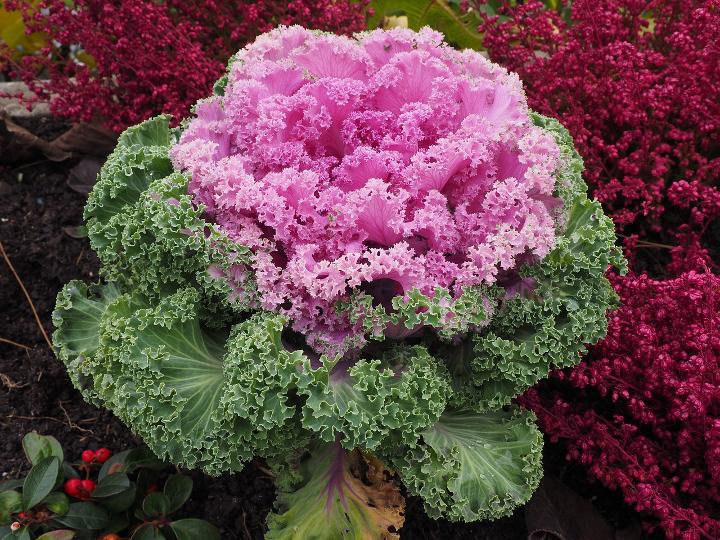
5. Nourishment
Ornamental cabbage, like other ornamental plants, benefits from regular watering and fertilization. You can use balanced fertilizers such as: B. Dilute the 10-10-10 or 20-20-20 formula to half strength and apply every 2 to 4 weeks during the growing season. Follow the instructions on the fertilizer package for proper use. Additionally, providing plenty of sunlight and well-drained soil will help ornamental kale grow.
6. Issues
Ornamental kale can be affected by a number of problems, including Diseases Alternaria leaf spot, black rot, cabbage rot, downy mildew, and yellow fusarium are common diseases affecting ornamental kale. Pests Cabbage beetles, cabbage grinder beetles, flea beetles, caterpillars, thrips, slugs, and aphids can infest ornamental cabbages. Calcium Deficiency Ammonia nitrogen can compete with calcium uptake by plants and can cause peak burns. Stem elongation High temperatures can cause stems to elongate excessively. Therefore, it is best to choose a location with good air circulation and temperatures between 55 and 60 degrees Fahrenheit.
What Are The Benefits Of Ornamental cabbage
Mustard greens have numerous health benefits, including being rich in vitamins A, C, K, folate, calcium, and fiber. They can promote eye health, boost immune function, support bone health, aid digestion, and are high in antioxidants, reducing the risk of chronic diseases such as heart disease and cancer. There is also a possibility. Plus, it's low in calories, making it perfect for weight loss diets.
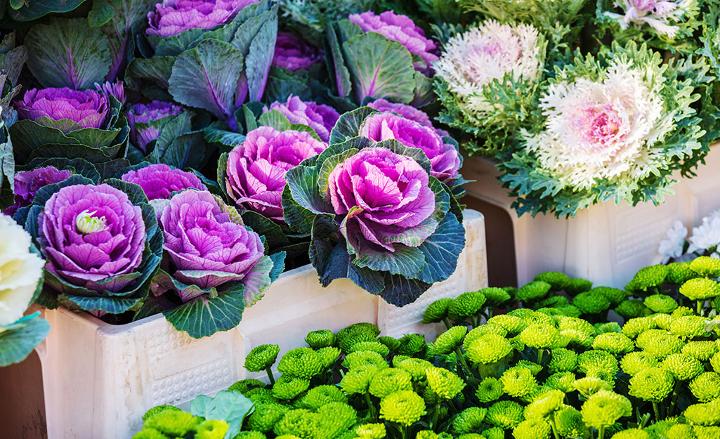
FAQs About Growing Ornamental cabbage
1. How to maintain ornamental cabbage?
Sunlight Ensure they receive at least 6 hours of sunlight daily. Place them in a location with full sun to partial shade. Watering Keep the soil consistently moist but not waterlogged. Water when the top inch of soil feels dry, typically every 1-2 days depending on the weather. Fertilizing Use a balanced fertilizer every 2-4 weeks to promote healthy growth. Follow the instructions on the fertilizer package for application rates. Pruning Remove any dead or yellowing leaves regularly to maintain the plant's appearance and prevent disease.
2. What are the uses of ornamental cabbage?
Ornamental cabbage, also known as flowering cabbage, is primarily used for decorative purposes in landscaping and ornamental gardening. Here are some common uses Ornamental Gardens Planted in gardens for their colorful foliage, which can range from shades of green to pink, purple, and white. Container Planting Ornamental cabbage adds visual interest to containers and pots on patios, balconies, and entryways. Seasonal Displays Often used in seasonal displays, especially in autumn and winter, to add texture and color to flower beds, borders, and mixed plantings. Landscaping Used in landscape design for mass planting, edging, or as focal points in flower beds and borders. Cut Flower Arrangements The colorful leaves of ornamental cabbage can be used in floral arrangements, particularly in autumn-themed bouquets and centerpieces.
3. Can I grow ornamental cabbage as indoor?
Yes, you can grow ornamental cabbage indoors, especially in containers or pots placed near a sunny window. Ensure they receive at least 6 hours of sunlight per day and well-draining soil. Keep the soil consistently moist but not waterlogged, and fertilize occasionally. Trim any damaged leaves and watch out for pests. With proper care, they can thrive indoors and add a beautiful touch to your space.
4. Which pot is best for growing ornamental cabbage?
For growing ornamental cabbage, it's best to choose a pot that is at least 12-14 inches in diameter and has good drainage holes at the bottom. Opt for a sturdy pot made of materials like terracotta or plastic. Terracotta pots are porous and allow for better airflow to the roots, while plastic pots retain moisture better. Choose a potting mix rich in organic matter and with good drainage properties.
5. From where can I shop for ornamental cabbage?
You can shop for ornamental cabbage at local nurseries, garden centers, or plant stores. Additionally, you can check online gardening retailers or websites that specialize in ornamental plants.

